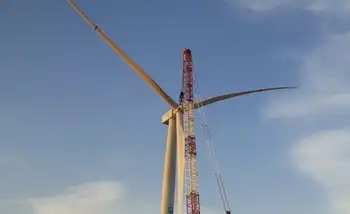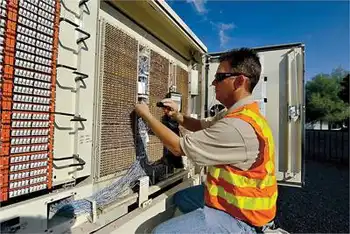Probe of Blackout Cause Focuses On Lake Erie Grid
WASHINGTON, DC -- - The largest power blackout in North American history prompted new calls Friday for overhauling the nation's electricity system. Investigators said the power disruptions likely began in the Midwest but they have yet to pinpoint the cause.
Investigators said they are focusing on a massive electrical grid that encircles Lake Erie, moving power from New York to the Detroit area, into Canada and back to New York state. There had been problems with the transmission loop in the past, officials said.
The head of the North American Electric Reliability Council, who earlier said northern Ohio may have been the flashpoint, later backed way from reaching any conclusion "until we're absolutely certain."
"We had some indication that the first transmission lines that were tripped were in the Midwest. .. We're not certain that is where it started," said Michehl Gent, president of the industry sponsored group that tracks power grids to assure their reliability.
The focus on Ohio had been criticized by Ohio officials as "speculation."
At a news conference, Gent provided a picture of the enormity of the blackout that began Thursday at 4:11 p.m. and raced from New England in the Northeast to Michigan and Ohio in the Midwest and southeastern Canada.
He said more than 100 power plants - including 22 nuclear reactors in the United States and Canada - were shut down, and the blackout affected 50 million people over a 9,300-square-mile (23,800-square-kilometer) area from New England to Michigan.
He said a preliminary determination of the cause of the cascading power disruption, which raced through the system in less than 10 seconds, may not be available until next week and more detailed investigations could last months.
"We never anticipated we would have a cascading outage" like this, said Gent, adding that he was "personally embarrassed" because his organization is supposed "to see that this doesn't happen."
While NERC closely watches grid reliability, it has no power to force transmission companies to comply with standards or correct violations.
Some in Congress have urged creation of an agency that would have industry police power. The issue is likely to be debated next month when lawmakers consider energy legislation.
Gent ruled out completely reports of a lightning strike or a fire in a New York City facility and said weather appeared not to have been a factor in the blackout.
He said electricity capacity was adequate when the blackout hit.
The investigation is focusing on "the Lake Erie Loop," a massive transmission system that goes through New York state south of the Great Lakes to Detroit and then up through Canada, down by Niagara Falls, back to New York, said Gent.
"That's the center of the focus. This has been a problem for years and there have been all sorts of plans to make it more reliable," he said.
A private company that monitors the grid said its technology showed the problem started in Michigan. "That was the epicenter," insisted David Trungale, vice president of SoftSwitching Technologies Inc., of Middleton, Wisconsin.
One reason it may be so difficult to pinpoint the cause is the speed in which the cascading outages raced across the Northeast and Ohio Valley as well as southeastern Canada.
Trungale said his company's monitoring stations recorded a power disruption in Connecticut only 2 seconds after the first problem was recorded in Michigan. He declined to describe the Michigan site further.
A spokeswoman for FirstEnergy Corp., whose electricity service area stretches along Lake Erie in Ohio, declined to speculate on the cause of the disruption.
Related News

Hydro One Q2 profit plunges 23% as electricity revenue falls, costs rise
TORONTO - Hydro One Ltd.'s (H.TO 0.25%) second-quarter profit fell by nearly 23 per cent from last year to $155 million as the electricity utility reported spending more on tree-trimming work due to milder temperatures that also saw customers using less power.
The Toronto-based company - which operates most of Ontario's power grid - says its net earnings attributable to shareholders dropped to 26 cents per share from 34 cents per share when Hydro One had $200 million in net income.
Adjusted net income was also 26 cents per share, down from 33 cents per diluted share in the second quarter of 2018.
Revenue was $1.41 billion, down from…




